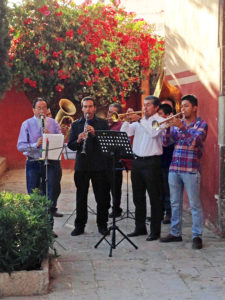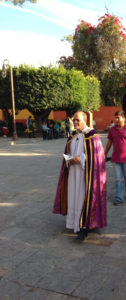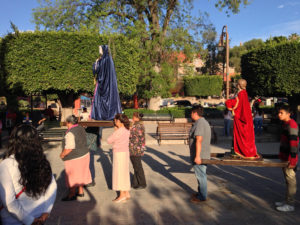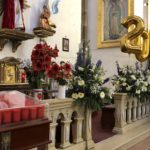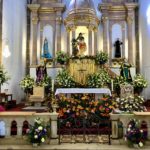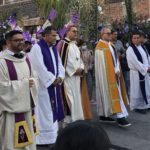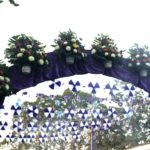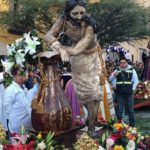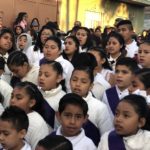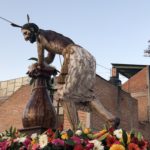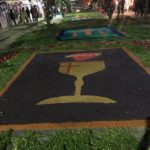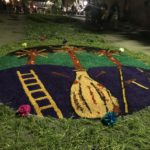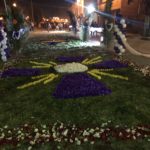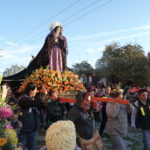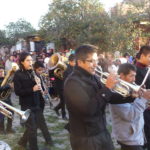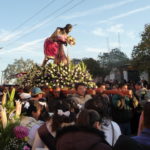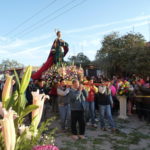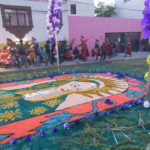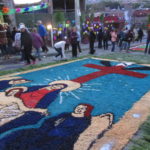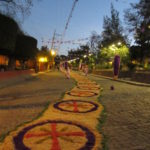El Señor de la Columna
(The Lord of the Column)
This year, 2023, marks the 200th year of the statue's visit to San Miguel. The original visit was In 1823, when the people brought the image to San Miguel from Atotonilco, hoping that He would deliver the village from a raging plague.
On the Sunday before Palm Sunday, the image of El Señor de la Columna makes its way from Atotonilco in procession to the Templo de San Juan de Dios, following a route along the lovingly and elaborately decorated Calle Independencia. Fireworks, a brass band, and a children's chorus accompany the solemn yet joyful procession.
A special commemoration will be a video mapping show depicting the history of the event, projected on the front of the church every night from 26 March to 11 April.
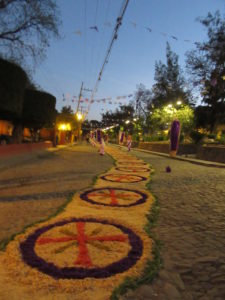
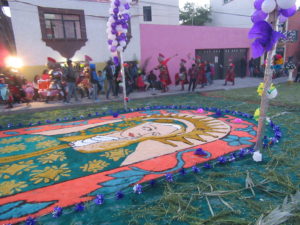

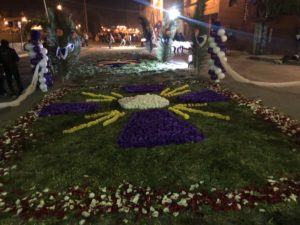
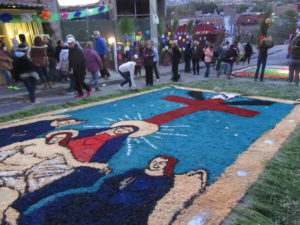
Viernes de Dolores
(Friday of the Virgin of Sorrows)
The Friday before Good Friday, the Virgin of Sorrows is honored with beautiful altars in homes and public places. This custom dates back to the Spanish colonial times of the 1600's when the Jesuits consecrated a chapel to Our Lady of Sorrows in the Temple of the Company.
The day is set aside to remember the sorrow of the Mother of Christ as she sat at the foot of the cross, watching her Son die. Most images of the Virgin show her with tears on her face, her hands clasped at her breast, and often holding a handkerchief. Sometimes she has a sword through her heart.
Thursday afternoon is devoted to cleaning and repairing public places in preparation for the festivities to come. In San Miguel, most of the more than forty public fountains in town are cleaned
and then filled with fresh flowers, chamomile, and fennel and decorated with cut paper in purple, white, and gold foil. There are special altars in some of the churches and in some public buildings. Many of the faithful also set up altars in their homes. These range from small touching memorials placed on a windowsill to elegantly decorated creations that may fill a whole room.
Although details vary in each display, there are standard elements incorporated into all of them. The image of Our Lady is always in the center—usually a statue, but sometimes a painting or banner. She is dressed in a purple mantel. Around her are white candles and purple flags or drapes. Purple is the color of grief and mourning and white signifies the Virgin's purity. Bitter oranges represent her sorrow; the green of chamomile her humility and the yellow, beauty of body and soul. The gold foil symbolizes her joy in the knowledge of her Son's resurrection. Fennel represents the betrayal and abandonment of Jesus by his disciples. There are pots of wheat grass, grown in the dark to keep it yellow. When it is brought into the light, it turns green, symbolizing the renewal of life and resurrection.
Hundreds of people walk along the sidewalks and streets, stopping to admire the altars through the open windows. Sometimes treats are given out by homeowners—fruit drinks, candies, ice cream, nuts and candied chilacayote, a kind of squash that has been served on this day for nearly 300 years. Ice cream and flavored water symbolize the virgin’s sweet tears.
Visiting the altars on this night provides a perfect entry into the spirit of Holy week
Christmas Posada
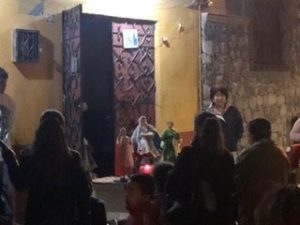
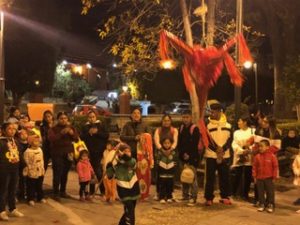
San Rafael
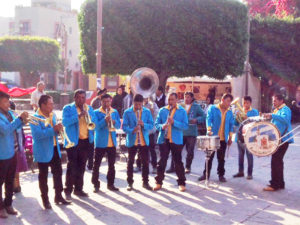
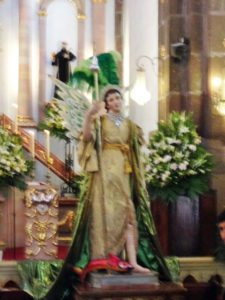
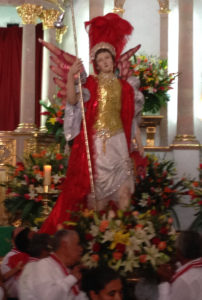
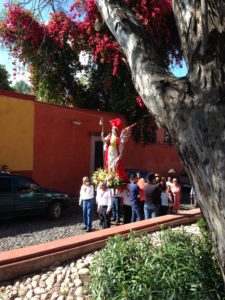
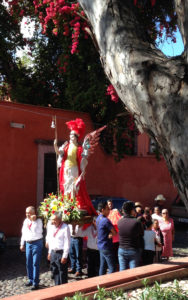
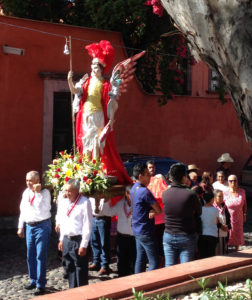
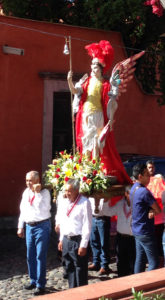
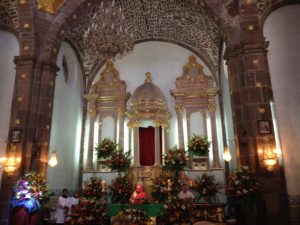
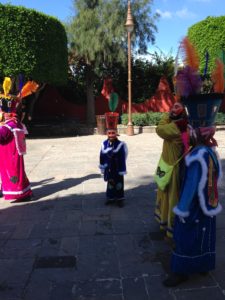
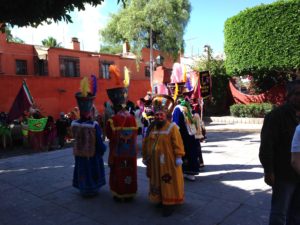
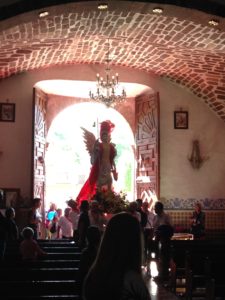
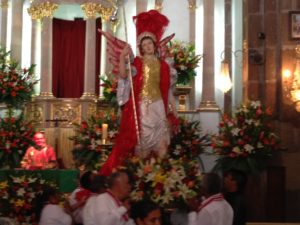
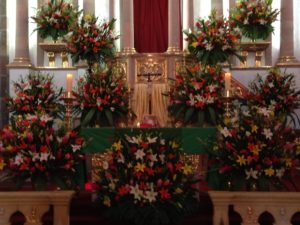
Via Crucis
